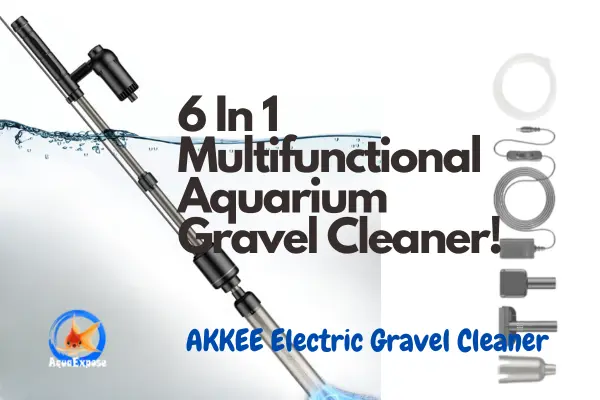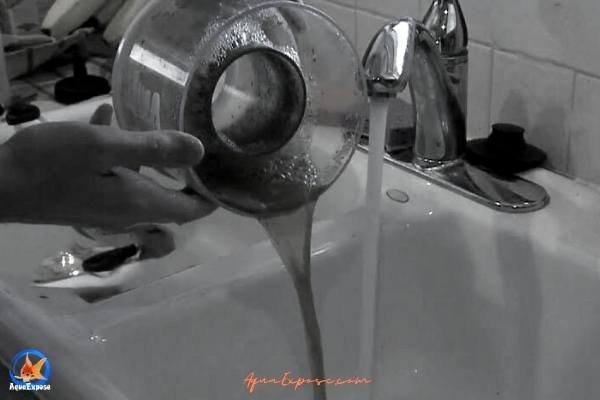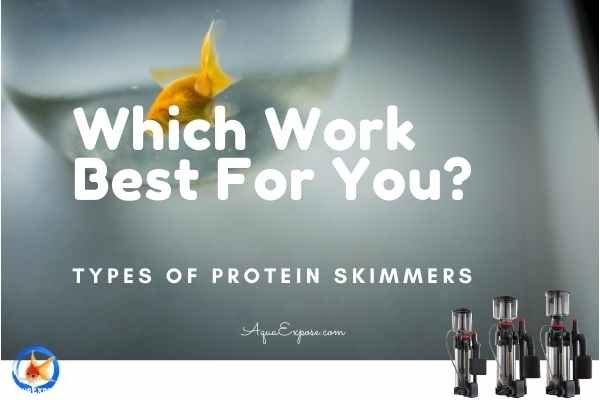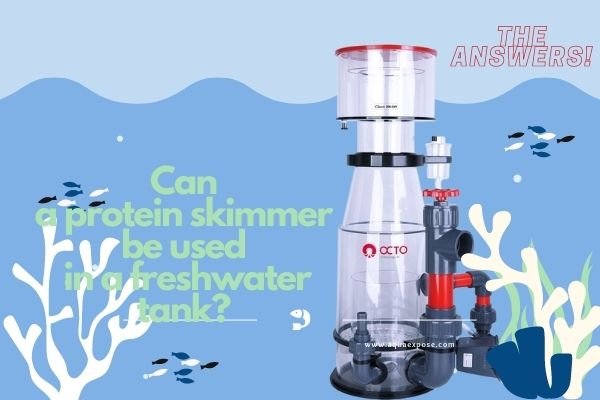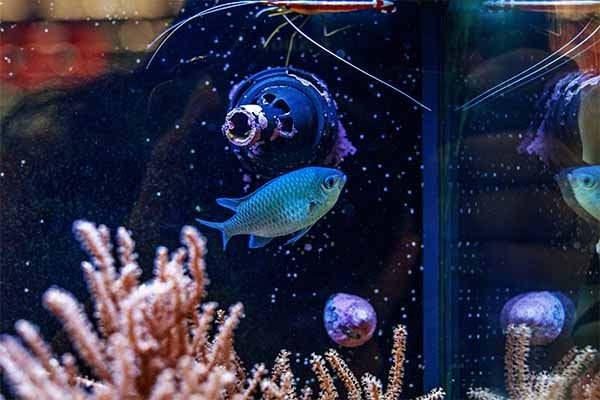How Does a Protein Skimmer Work & How Does It Clean Saltwater Aquariums?
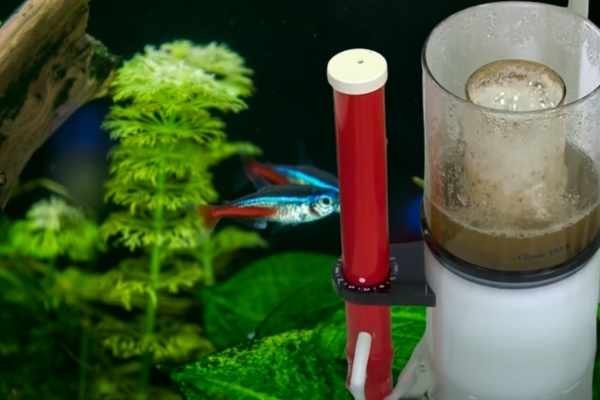
People who are interested in aquatic life or those who have a passion for building up a saltwater aquarium are well aware of what a protein skimmer is and what a valuable role it plays, mainly for saltwater aquariums.
You may not have heard of a protein skimmer if you’re just beginning or new to building a saltwater aquarium. It’s one of the most necessary pieces of equipment to keep your saltwater aquarium clean and hygienic. So that the little animals inside the tank can live a healthy life and you can enjoy a clean and pollution-free display of your aquarium.
However, have we learned enough about how a protein skimmer works, though? How does it cleanse the water? Let’s go digging for more to satisfy every curiosity!
Do I Need a Protein Skimmer?
Although it brings a more significant deal of advantages for your tank, a protein skimmer isn’t absolutely necessary. It’s only required when you’re planning to create healthy saltwater aquariums and Nano reef tanks.
The remaining scenarios, such as a regular or freshwater aquarium, do not require the use of a protein skimmer. Although, you can still have them if you don’t want to change the water often.
In this regard, we have another article, ” When Do You Need a Protein Skimmer and How to Use it ?”
What Does a Protein Skimmer Do?
Loads of waste like fish feces, chemicals, and food residues pile up in your tank every day. These protein-based contaminants float to the surface and form foul-smelling froth. Changing the water and cleaning them on your own can be really exhausting. Here’s where the protein skimmer comes in to help you out.
A protein skimmer is similar to a traditional filtration device for your marine aquarium but with added advantages. Its primary duty is to filter out organic waste from water. They do this by creating a large number of bubbles and collecting organic dirt through the bubbles, therefore removing the poisons from the water.
How Does the Skimmer Clean the Saltwater Aquariums?
If you’ve ever been to the beach, you’ve probably noticed bubbles on the surface with an unusual odor. Have you ever wondered why it exists? The ocean is a massive natural filter and chemical injection system.
Consider the tank as a small sea. But how will the water be filtered here? Yes, the protein skimmer will take care of everything. Thousands of bubbles are created by a protein skimmer. It’s known as the bubble blower. It takes air and water at the bottom, and waste attaches to the bubbles as they float through water inside the skimmer.
Each rising bubble unites with other rising bubbles to form foam. The foam climbs into the skimmer’s neck and bursts within, dumping the clinging dirt into the skimmer’s collection cup. When you clean the skimmer, it means rinsing and cleaning dirt gathered in the collection cup.
The bubble becomes loaded with organic stuff swimming in the tank water. As long as the bubble does not burst while swimming higher to the surface, it carries the trash within it and then takes it to the skimmer top.
Will Protein Skimmer Help with Algae?
Protein skimmers do a great job in reducing the algae. It removes the dirt and debris before it has a chance to degrade into phosphates and other harmful elements. Algae of any kind, whether red slime or green, causes a lot of damage to the saltwater aquarium habitat. These skimmers can do wonders to keep you from stressing over these algae blooms and mess.
Do Protein Skimmers Remove Biological Toxins?
The protein skimmer’s primary purpose is to eliminate any biological contaminants that the aquarium produces. This involves common organic substances such as proteins, feces, unprocessed meals, and chemical additives of any kind. In the water, these act as harmful contaminants.
The protein skimmer releases a large number of bubbles, which condensate into foam, which floats on the surface of the water and pulls all of the waste to the top of the skimmer. The skimmer’s primary and general purpose is to collect and eliminate these wastages.
What is the Dark Liquid that the Protein Skimmer Removes?
As we all know, the organic waste in your tank is a mix of proteins like ammonia, nitrite, nitrate, dead cells, food leftovers, and other things. The longer they stay in the water, the more unpleasant they get, with a horrible odor and a liquid-like consistency. Essentially, they build up on top of the skimmer, resulting in the dark liquid we see when cleaning. The protein skimmer helps to remove these foul-smelly dark liquids.
Do Protein Skimmers Remove or Reduce Nitrates from the Aquarium?
Nitrates aren’t as damaging as nitrite or as toxic as ammonia, so they’re unlikely to be a problem unless there’s a lot of them floating around in the tank water. However, the issue arises when these nitrates serve as food or fuel for algae.
We already know that algae may cause a lot of damage to the aquarium habitat, which is why it’s so important to keep the nitrate levels under control. Is the question does a protein skimmer helps with this problem?
No, protein skimmers can’t effectively remove the nitrates or phosphates from the water, but they can limit their growth. Protein skimmers collect organic garbage before it decomposes and emits nitrogen compounds. These skimmers can do wonders in reef or coral aquariums, where a shallow nitrate is essential for coral survival.
Final Words
Now that you have come to know and learned everything there is to know about protein skimmers, are you considering having one for your saltwater aquarium? Because the idea won’t be anywhere near a wrong decision rather, you’ll be pleased to try it.
We’ve tried to enrich this piece of article as much research-based as we can, including whether or not you need one, what they do, and how they act. We hope your experience with the protein skimmer goes off well, and it comes in handy to take off some burden of caring for a saltwater aquarium off your hands.
Now, if you have decided to buy one for your tank, you can read our deep review 9- Best Protein Skimmers from here. If you have any questions, you may leave a comment below. I will surely come back with your answer. Thanks for reading.

